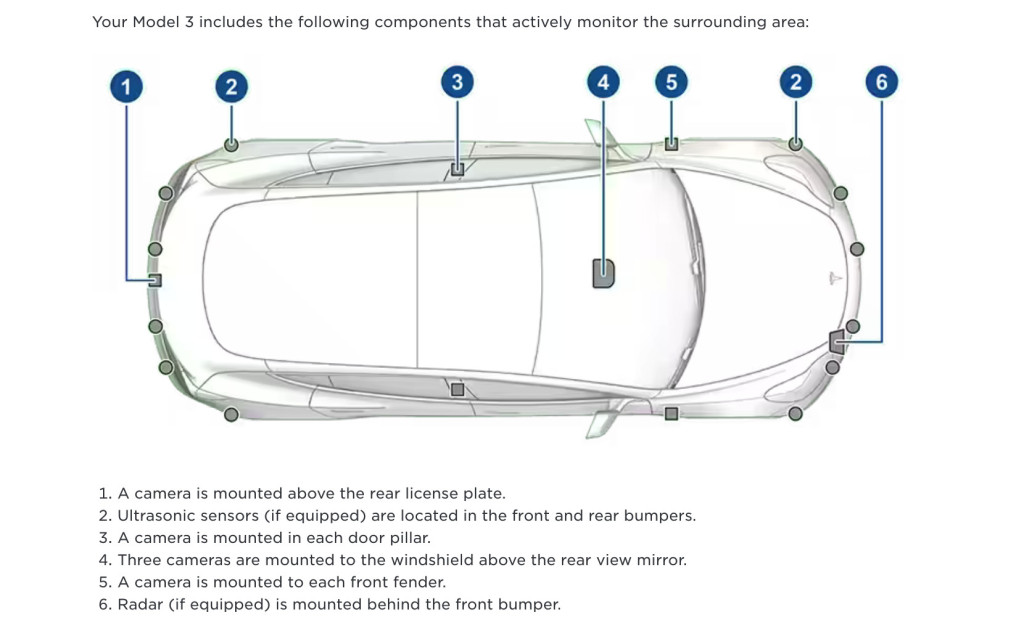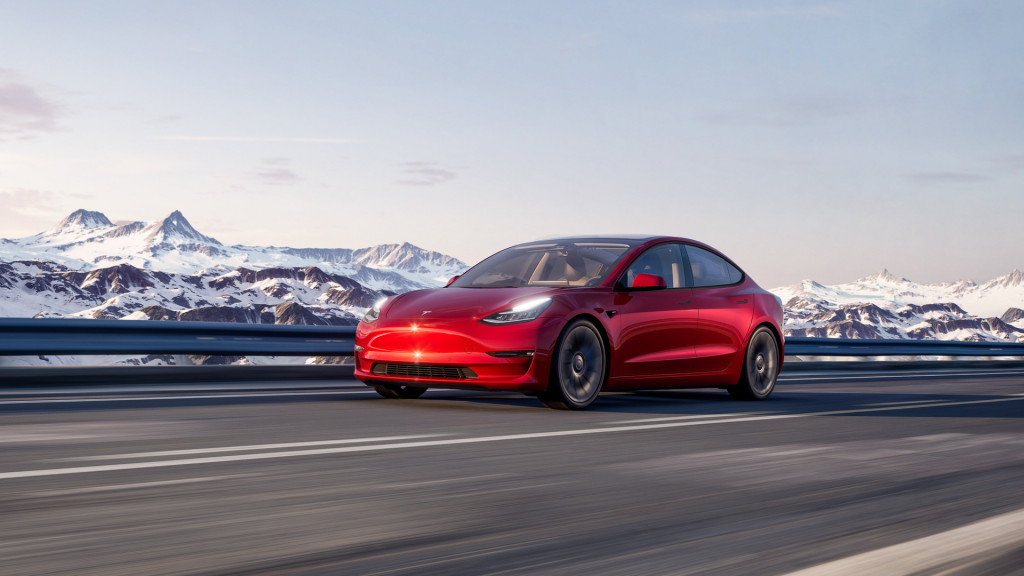Tesla confirmed that as of October 2022, all Model 3 and Model Y vehicles built for North America, as well as Europe, the Middle East, and Taiwan, no longer include ultrasonic sensors.
For a range of driver assistance features, including Autopilot, Enhanced Autopilot, and what Tesla considers Full Self Driving—plus other active-safety features—the electric vehicles will rely solely on the camera-based system that the company terms Tesla Vision.
Tesla says that cars shipped without ultrasonic sensors, which it sometimes abbreviates USS, will “temporarily” lose access to a wide range of features, including Park Assist, Autopark, Summon, and Smart Summon.
These features will all be back, Tesla promises, but the company makes no assurance that their replacements will be better. They will be restored “in the near future,” according to the company, “once these features achieve performance parity to today’s vehicles.”

Tesla Model 3 sensors - from owner's manual
The automaker had up until now included 12 ultrasonic sensors per vehicle, located at the front and rear bumpers. Ultrasonic sensors are used primarily for parking, as well as short-range detection. They’re also tied into the automatic emergency braking system in some vehicles, although this doesn’t appear to be the case even in newer Teslas with them.
Tesla says that it has no plans to disable the ultrasonic sensors in the current fleet of vehicles—something it could technically do over the air. Those affected features will continue to work as currently billed in models with those sensors.
Tesla last year announced that it would drop radar sensors from all its vehicles, a move that at least temporarily caused the automaker to lose some safety accolades. The company has, for years, successfully resisted the inclusion of the lidar sensing that other companies—and some safety officials—see as essential for future self-driven vehicles.

2022 Tesla Model 3
That shift away from radar corresponded, at least according to some sources, with a sharp rise in complaints to the NHTSA over automatic-braking behavior—and instances referred to as “phantom braking.”
Tesla will reportedly save money both on the sensors and the use of corresponding chips. CEO Elon Musk has claimed that signal/noise from the sensors actually detracts from the performance of its camera systems.
“Given the incremental improvements already achieved with Tesla Vision, and our roadmap of future Autopilot improvements and abilities, we are confident that this is the best strategy for the future of Autopilot and the safety of our customers,” the company summed in a support page on the change.
The company says that it will roll the deletion out to other Model 3 and Model Y versions globally, followed by Model S and Model X in 2023.













